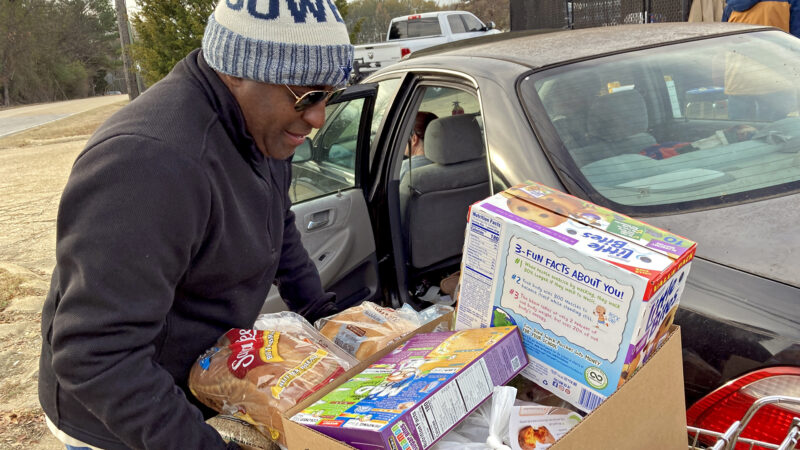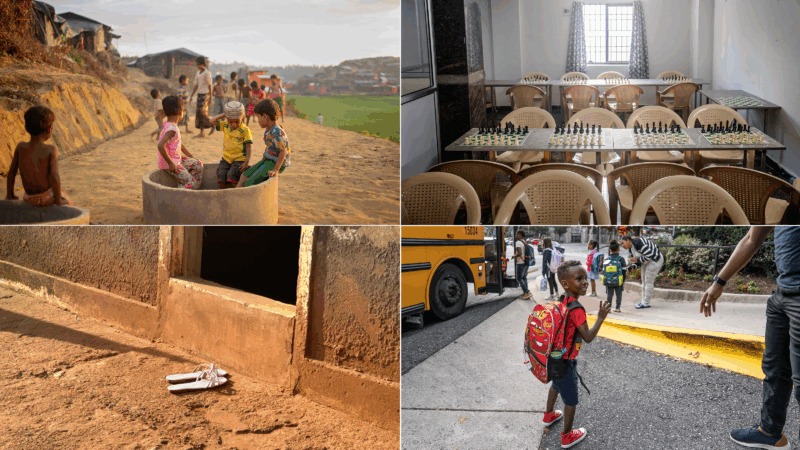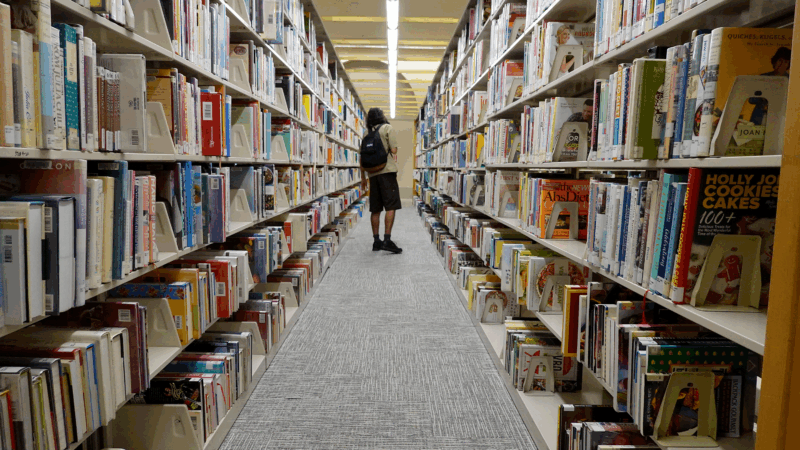Despite strong economic signs, food pantry lines are still growing in the Gulf South
Volunteer Garrett Hereford loads boxes of food into cars at the St. Luke Food Pantry in Tupelo, Mississippi, on Nov. 30, 2023.
2023 was a hot year for the economy — at least on paper. Inflation has slowed down, the unemployment rate remains tight and the latest gross domestic product numbers were just under 5% — better than initially expected.
But one non-traditional measure shows signs of trouble — traffic at local food banks. Across the Gulf South, more and more people are relying on food pantries.
Here are some key takeaways from the Gulf States Newsroom’s annual check-in with food pantries and the people using them.
Demand is up, but slowing
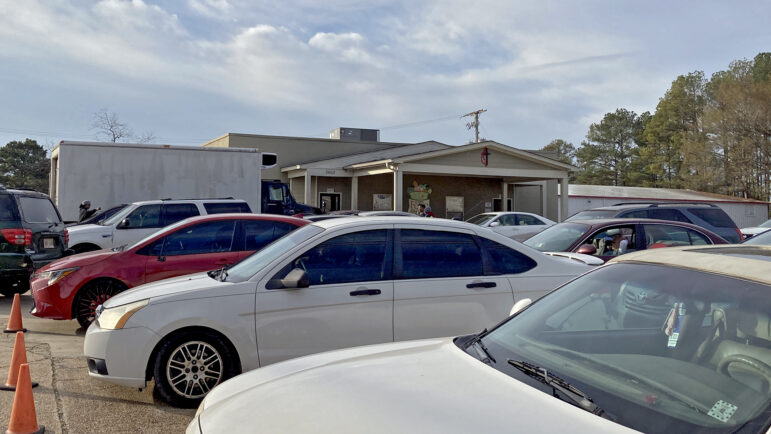
The St. Luke Food Pantry in Tupelo, Mississippi, opens up at 8 a.m. every Thursday, but cars will typically start a single-file line that stretches from the parking lot and into the nearby roadway hours before then.
Last year, the pantry helped 2,700 households in October. This year, traffic is up about 10%, setting a record for the pantry. The one positive sign of the comparison is that the demand did not increase nearly as much this time. In 2022, demand went up about 47% compared to 2021 data.
Large spikes like that have been happening since the start of the COVID-19 pandemic, so the slower increase is still a relief — even if the pantry would have rather seen the numbers come down instead.
It’s also hard to know how much of this reflects growing hunger versus more people being aware of and using the pantry’s services.
“Every week, there are new people and new households getting signed up,” said Jason Martin, executive director of the St. Luke Food Pantry.
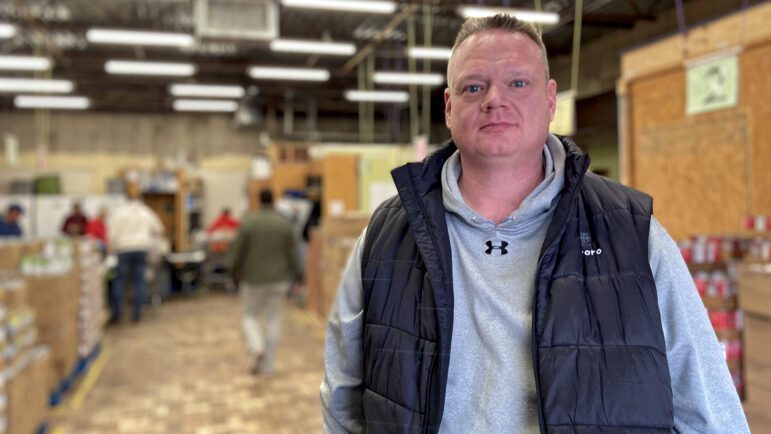
Martin said that people come and go as their circumstances change. In previous years, major drivers like the COVID-19 shutdowns explained most of the spikes. But this year, each person tends to have their own specific reason.
“I feel like we’re normalized again, as far as the reasons why people are coming,” Martin said.
Several people in line at the food bank on a December morning also said that despite needing aid, they feel they’re doing better financially for different reasons: a new job, finding a supportive church or a tight labor market leading to plenty of interviews after losing an old job.
But despite their better circumstances, they still need the pantry to get by.
“It’s not just for the poor. It’s for everybody,” said James Williams as he waited to be served at the pantry. “Even the working.”
Inflation also slowed but still felt
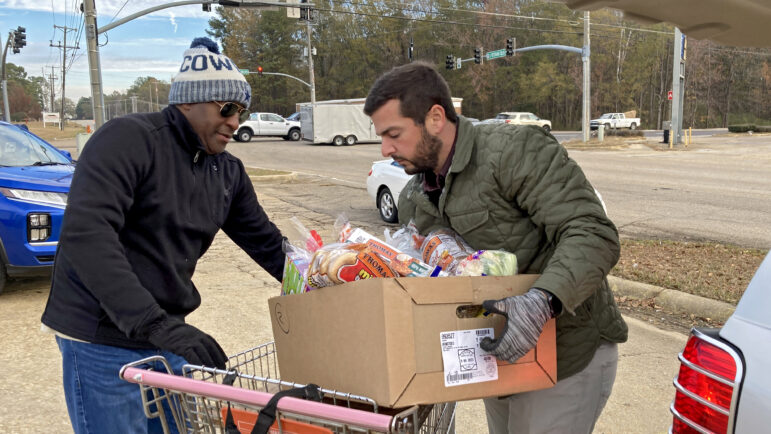
One burden that has remained constant in everyone’s mind this year is inflation, and not just its effect on grocery prices.
Electricity prices have been on the rise, increasing by 3.4% between November 2022 and 2023, according to the Bureau of Labor Statistics. Randy Wade, who received help from the St. Luke Food Pantry in November, said higher prices may cause him to change his Christmas decoration plans.
“I may put the tree up but I ain’t going to put no lights on it,” Wade said. “Cause you turn your lights on, it will go up some more.”
But despite these rising costs and worries around it, most economists say inflation is actually slowing down. Similar to the demand for food banks, inflation is still going up, just not as fast as last year.
Still, food bank operators worry this is not sustainable. While they often meet most of the needs in their areas, they still have to turn some people away when they run out of food. If prices continue to rise, even at a slowed rate, it could affect the pantry’s buying power — leading to more families going without food assistance.
“I’m just concerned that in the months to come, we will be without the kind of support we need,” Michael Ledger, president of Feeding the Gulf Coast, said.
A tattered social safety net
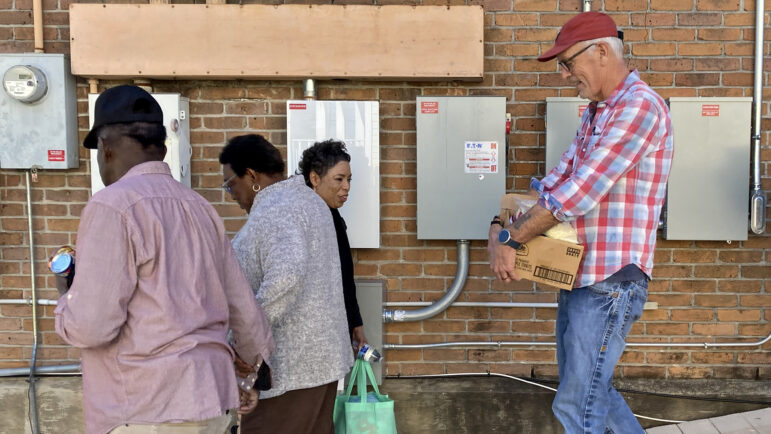
The end of many pandemic-driven social safety net programs in 2022, including the Child Tax Credit, led to a rise in poverty across the country. This year, more of that aid ended, likely leading to more hardship.
That included a program meant to prevent people from being kicked off Medicaid and changes to the Supplemental Nutrition Assistance Program (SNAP), better known as food stamps.
SNAP benefits received a boost during the pandemic in 2021, but that ended early this year. While the drop varied from household to household, the average person lost an estimated $90 per month according to the Center on Budget and Policy Priorities. Cost of living increases to Social Security checks also caused a cutback in SNAP benefits, since program rules consider those payments as income.
Janice Fletcher, a New Orleans resident waiting outside the Broadmoor Improvement Association’s food pantry in December, said her SNAP benefits dropped from about $250 to $23 because of changes to those benefits, like the Social Security increase.
“I’m trying to put my foot forward and they pulling me back,” said Fletcher. “I’m not going forward.”
Supply chain improvements
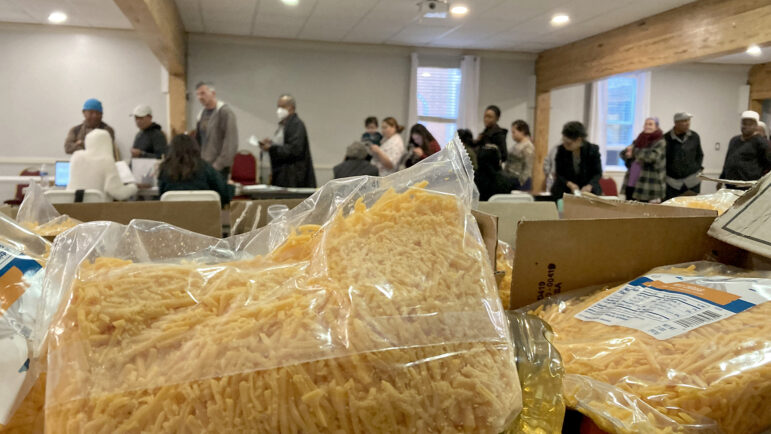
Last year, The Broadmoor Improvement Association compared ordering food for its pantry to buying highly coveted Taylor Swift tickets. It meant waiting at midnight at a computer and clicking send as soon as the order link went live. Even a short delay could mean half of the cart was no longer available.
That’s no longer the case, though, according to Daniel Williams, the lead organizer at the food pantry.
“It’s definitely still everyone’s ordering at once,” Williams said. “There is still kind of a time to go and get what you need. And it’s always great to be early, but folks aren’t left out in the cold.”
He credits the improvement to better operations from their supplier, Second Harvest. Easier food deliveries are needed due to demand also increasing here. The pantry served about 500 families in November.
“It’s good in one way because we know that we’re meeting a need,” Williams said. “But also, that the need is growing is saddening.”
This story was produced by the Gulf States Newsroom, a collaboration between Mississippi Public Broadcasting, WBHM in Alabama, WWNO and WRKF in Louisiana and NPR.
How George Wallace and Bull Connor set the stage for Alabama’s sky-high electric rates
After his notorious stand in the schoolhouse door, Wallace needed a new target. He found it in Alabama Power.
FIFA president defends World Cup ticket prices, saying demand is hitting records
The FIFA President addressed outrage over ticket prices for the World Cup by pointing to record demand and reiterating that most of the proceeds will help support soccer around the world.
From chess to a medical mystery: Great global reads from 2025 you may have missed
We published hundreds of stories on global health and development each year. Some are ... alas ... a bit underappreciated by readers. We've asked our staff for their favorite overlooked posts of 2025.
The U.S. offers Ukraine a 15-year security guarantee for now, Zelenskyy says
Ukrainian President Volodymyr Zelenskyy said Monday the United States is offering his country security guarantees for a period of 15 years as part of a proposed peace plan.
Genre fiction and female authors top U.S. libraries’ most-borrowed lists in 2025
All of the top 10 books borrowed through the public library app Libby were written by women. And Kristin Hannah's The Women was the top checkout in many library systems around the country.
The Best Tiny Desk Concerts of 2025
Which Tiny Desk made an audio engineer question everything? Which one made a producer want to cry? Touch grass? Look back on the year in Tiny Desk, with the people who make them.

